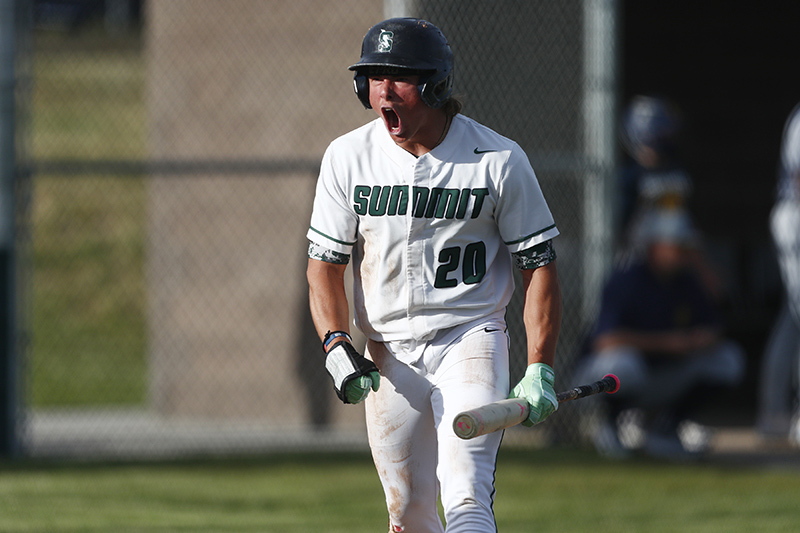Notre Dame is … good and lucky and … Notre Dame
Published 12:00 am Saturday, November 17, 2018

- Notre Dame is … good and lucky and … Notre Dame
For most of its long history, college football was a local pastime. Teams recruited players from their backyard, scheduled games in their region and joined conferences based on geography. If they were lucky, they were on national television once or twice a year.
But one team was different. Notre Dame recruited players nationally, because a religious faith, not geography, defined its community. The team from tiny South Bend, Indiana, has been playing games in New York, Texas and California for almost 100 years. The Fighting Irish will play No. 12 Syracuse (8-2) on Saturday at Yankee Stadium, a familiar haunt for nearly a century. As early as the 1950s, rebroadcasts on Sundays put the Irish on television sets across the country.
Trending
“Notre Dame was the only truly national university,” said football scholar Michael Oriard, who played there in the 1960s. “Once they discovered they were connecting with Catholics all over the country and saw it was a tremendous advantage, they embraced it.”
The small Catholic university claims 11 national championships. Seven of its players have won the Heisman Trophy.
But media technology has turned the United States into one big neighborhood. Starting a few decades ago, the business of college football changed. Soon, the Fighting Irish were not so different anymore.
Today, massive recruiting budgets, private planes and social media make it easy for a team from Alabama to recruit a player from California. Michigan State plays at Oregon and Oklahoma plays at Ohio State; neutral-site games bring Southern California to Arlington, Texas, and Washington to Atlanta. Big media deals mean live telecasts and streams of nearly every game in tens of millions of households on network television, cable TV and conference-owned networks.
Every major program can be Notre Dame now.
“Alabama’s become national,” recruiting analyst Tom Lemming said. “Their quarterback’s from Hawaii!”
Trending
That may be good for college football, but it has not been good for Notre Dame. The Fighting Irish have lost their uniqueness, which for decades was the university’s competitive advantage. Notre Dame’s last national championship came in 1988. That was right around when college football broadcasting was deregulated — with the NCAA no longer limiting the number of times a team could appear on national television — and cable television exploded, leading to the present status of teams from 10 conferences playing across a dozen time slots on several national channels.
The high school football players today never lived in a world in which Notre Dame was, well, Notre Dame.
“The edge they had back in the ’60s and ’70s is gone,” college football analyst Phil Steele said. “They don’t have that brand name because these kids are all 18 years old.”
So why are the No. 3 Fighting Irish (10-0), under coach Brian Kelly, two eminently winnable games away from a berth in the four-team College Football Playoff?
Notre Dame appears to have reached this point by staying just distinct and universal enough.
“We work very hard to maintain the national footprint,” said Jack Swarbrick, the university’s athletic director.
The defining Notre Dame season came before even the first Yankee Stadium was built. In 1913, the coach, Jesse Harper, scheduled games at Texas, at Penn State and at West Point, generating a flurry of publicity. The Irish’s win over Army, then a national power, just up the Hudson River from the country’s media capital, was huge news.
The captain of that team, Knute Rockne, became the coach and continued to schedule games far and wide — at Princeton, at Nebraska, at Georgia Tech. In 1926, he put the team on a westbound train to begin Notre Dame’s biggest rivalry, with Southern California. Rockne, who saw himself as a marketer, shrewdly exploited emerging mass media.
“Sports writing was invented in the ’20s in some ways,” said James T. Fisher, a professor of American Studies at Fordham University. “Babe Ruth was No. 1, and Notre Dame was No. 2.”
Notre Dame stood apart as a rare Catholic team that excelled in football. Most Catholic colleges de-emphasized the sport because it was expensive, adopting basketball instead. This distinction helps to explain Notre Dame’s eclectic scheduling, as several nearby teams refused to play it. The university also doubled down on football to promote Catholic assimilation in the Protestant-dominated culture.
“It was about wholesome activities,” Fisher said. “Football was tailor-made for this all-American display of Catholic Americanism.”
Had Notre Dame been founded by Protestants, it could never have distinguished itself on the gridiron this way. Instead, as America’s Catholic team, it monopolized Catholic football players nationally. There is a lengthy chicken-or-egg debate to be had about Notre Dame’s football success and interest in football among the offspring of Italian, Polish and Irish immigrants.
“There was a good line: ‘Notre Dame doesn’t recruit, it gathers,’” Oriard said. “It could have the pick of the best Catholic high school football players everywhere in the country.”
Its uniquely nongeographic fan base also made Notre Dame an obvious choice for national television rebroadcasts starting in the 1950s. Notre Dame quickly grew into the country’s most prominent (and perhaps most polarizing) team.
While Notre Dame’s glory years were the ’20s through the ’40s, all these characteristics kept it competitive when college football’s center of gravity swung from the Northeast and Midwest toward the Plains and the South. The Irish split the 1966 national championship and won two more in the ’70s.
And then everything about college football changed. Notre Dame’s status as a national team had been a historical accident. Its success today is a product of its deliberately becoming the apotheosis of its former self.
Today, Notre Dame barnstorms relentlessly. Its five-games-a-season deal with the Atlantic Coast Conference provides a steady stream of games in the recruiting-rich Mid-Atlantic and South. Its annual series with Southern California and Stanford means one game in California every year. Future schedules will have the Irish travel to Georgia, Alabama and Texas A&M. This weekend’s game is a part of the Shamrock Series, which has also taken the team to San Antonio, Boston and Chicago.
“We have been in nine of the 10 largest markets in the United States during my time here,” Swarbrick said. (The odd city out is Houston.)
Most college football independents joined conferences decades ago. Notre Dame has remained unaffiliated with a league, allowing it to sign its own television deal, with NBC. This, Swarbrick said, “allows all our home games to be broadcast on a national basis, not regionalized.”
Notre Dame also tries to peddle academic excellence. It sacrifices some players bound for the Alabamas and Ohio States — whom it likely was not getting anyway — but gains a distinguishing selling point.
Certain high school players “are looking at Notre Dame, Stanford, Northwestern,” said Joe Casamento, the coach at St. John’s College High School outside Washington. Two of his players have gone to Notre Dame recently. “It’s more about who goes there and what kind of alumni do you have, the opportunities — what that school can do for you after college.”
Notre Dame’s recruiting classes have consistently ranked in the top 15 nationally. This season’s roster has players from 28 states and the District of Columbia.
In short, Notre Dame has remained competitive. But competitive enough? Since nearly winning a championship in 1993, this is only the second time the Irish have contended seriously for a national title.
In 2012, Notre Dame’s idiosyncratic schedule helped it go undefeated. Its opponents had down years, and it landed in the national championship game opposite a one-loss Alabama team that was favored by more than a touchdown — and ended up winning by four TDs, 42-14.
This year, the schedule has gone right again. Notre Dame played its strongest opponent, No. 4 Michigan (9-1), at home, in the season opener, before the Wolverines hit their stride. Its toughest true road game was at unranked Virginia Tech (4-5). If it wins Saturday against Syracuse — solid, but hardly scary — and the next weekend at teetering Southern California (5-5), then a playoff spot is assured.
“There’s some seasons where you look at their schedule and go, ‘Wow, that’s brutal,’” Steele said. “This year, they catch a break.”
Yes, it is true: Sometimes, fittingly, the Irish get lucky.








